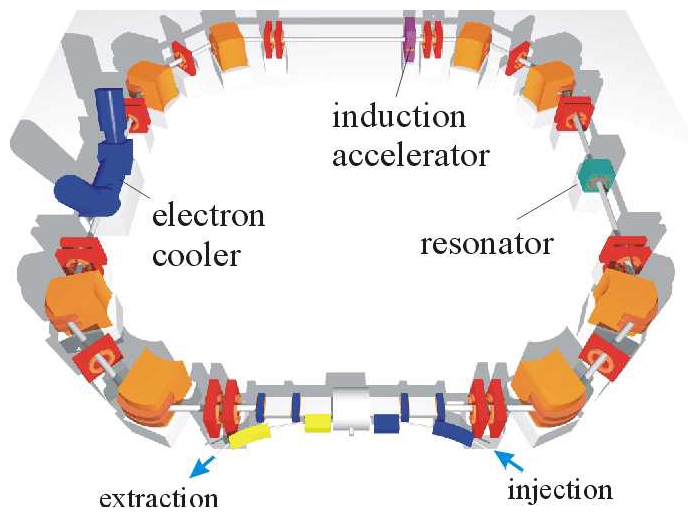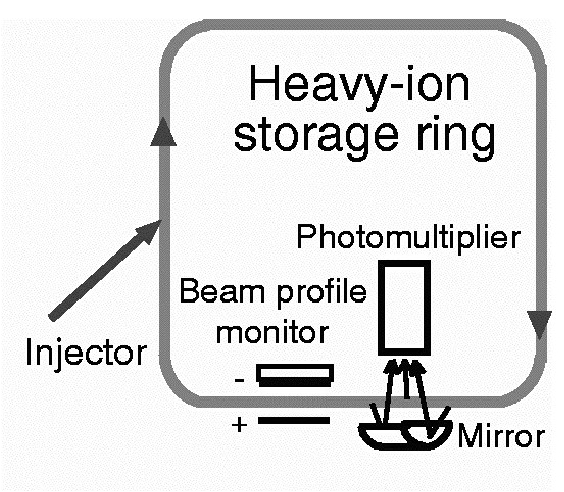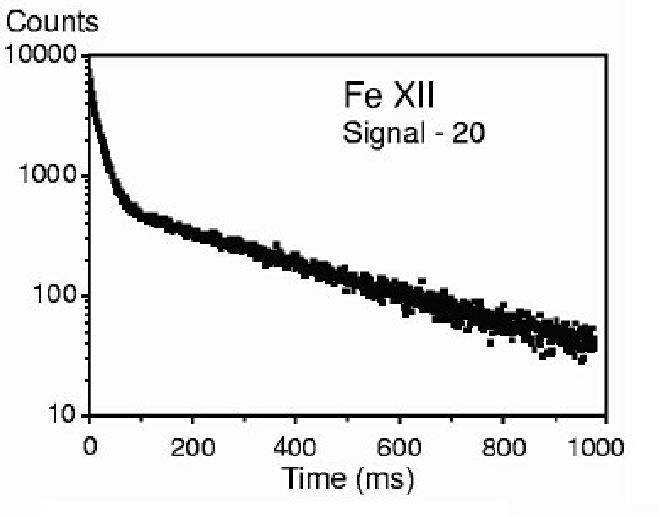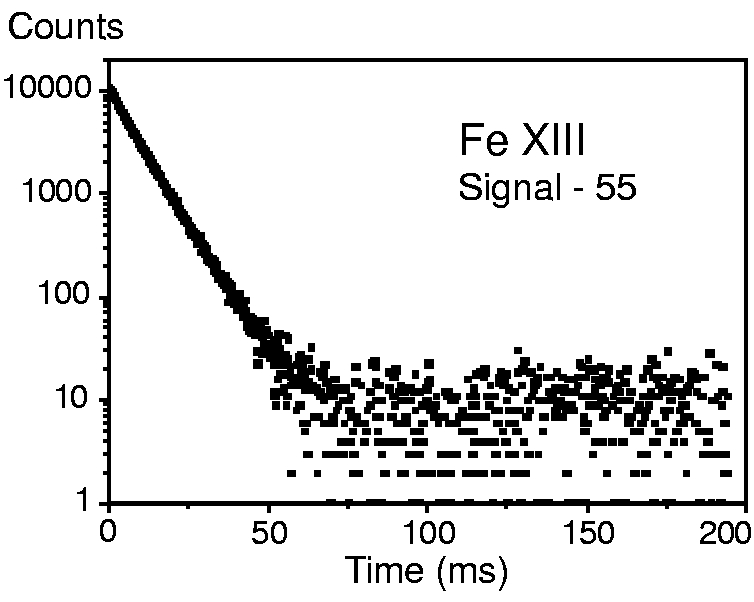Lifetime measurements at the TSR heavy-ion storage ring
photomultiplier (PMT) or beam profile monitor (BPM)


Objectives:
A heavy-ion storage ring provides excellent conditions for a variety of atomic lifetime measurements, using
Two of these techniques, DR and passive optical observations, have led to lifetime data of unprecedented accuracy. At the time, such accuracy had otherwise only be reached for fast-beam laser spectroscopic studies of neutral alkali atoms. Meanwhile the electron beam ion traps at Livermore have yielded high-quality lifetime data on a variety of multiply charged ions as well. Where the same or comparable atomic systems have been studied, the results are mutually consistent, confirming the reliability of the techniques used in either experiment.
The first experiments have employed dielectronic
recombination (DR) of ions with electrons in the
electron cooler of TSR. Here the cooler can serve two purposes:
a) the momentum distribution of the stored ion beam can be reduced by collisions with a
"cold" electron beam of the same mean velocity;
b) the electron beam velocity can be tuned so as to offer ion-electron collisions
of selected narrow-band collision energy.
In this way, state-selective detection via narrow DR resonances is achieved, with
the actual detection proceeding via observation of the downcharged (recombined) ions.
This technique has worked best for He-like projectile ions, where high-precision benchmark
data opened the field of millisecond-lifetime studies of multiply charged ions.
Since the structure of these ions has also been calculated with high accuracy,
they provide a sensitive testing ground.
The passive optical measurements are conceptually very simple. Ions of a given charge state are accumulated in the storage ring. Then injection stops, and observation begins. Measuring both the signal related to the excited ions and the stored ion beam current as they decrease with time, we extract the characteristic time constant of the excited atomic level. We rely on the ions being excited from their production in the ion source or from stripping processes in the injector accelerator. All short-lived (regular) levels will have decayed to the true ground level or to metastable levels in the ground or low-lying configurations before the ions reach the storage ring (a time of 5 or more microseconds). Not requiring a laser, this technique is very versatile and gives access to many ion species. For some of these, high data quality and theoretical description rival each other in accuracy. In most cases (for more than one or two electrons in an open shell), however, the experimental lifetime results from the heavy-ion storage ring are superior by an order of magnitude.
As detectors, we employ either of the following:
| Lay-out of the TSR heavy-ion storage ring | Schematics of optical detection by photomultiplier (PMT) or beam profile monitor (BPM) |
|---|---|
 |  |
| Decay curve of Fe11+ in the UV, with 3 fast and one slow (300 ms) component |
Decay curve of Fe13+ in the UV, with one dominant (8 ms) component |
|---|---|
 | 
|
Results of atomic lifetime measurements at TSR
Recent reviews put the above work into context and also cover more measurements of such long atomic level lifetimes, using a variety of ion trap types.
Physica Scripta 61, 257 (2000)
Physica Scripta T 100, 88 (2002)
Can. J. Phys. 80, 1481 (2002)
Page updated on 13 Dec 2012